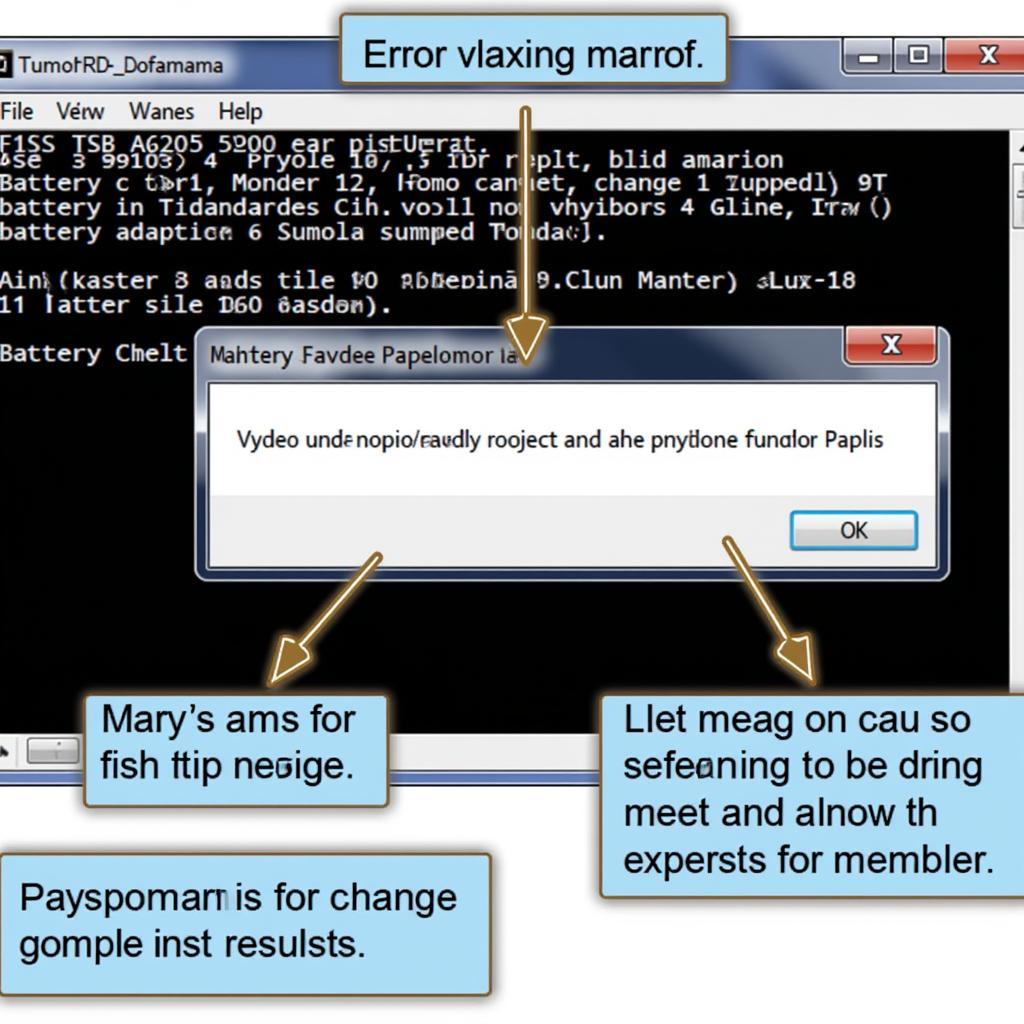Checking your 01M transmission fluid level correctly is crucial for the health and longevity of your automatic transmission. Using VCDS (Vag-Com Diagnostic System) provides a precise and reliable method, unlike the dipstick method which can be inaccurate. This comprehensive guide will walk you through the process step-by-step, explaining why it’s important and how to avoid common pitfalls.
Why Accurate 01M Transmission Fluid Level Matters
The 01M transmission, found in various Volkswagen, Audi, and Seat models, is a complex piece of engineering. Correct fluid level ensures proper lubrication and cooling, preventing premature wear and tear on internal components. Too little fluid can lead to slippage, overheating, and ultimately transmission failure. Too much fluid can cause foaming, which also negatively impacts performance and longevity. Using VCDS for the 01M transmission fluid level check eliminates the guesswork and ensures accuracy.
Understanding the VCDS 01M Transmission Fluid Level Check Process
The VCDS software interfaces with your car’s onboard computer, allowing you to access data and perform functions beyond the capabilities of standard diagnostic tools. For the 01M, it measures the transmission fluid temperature (TFT) and uses this to calculate the correct fluid level. This method is far more precise than relying on a dipstick, especially considering the temperature sensitivity of automatic transmission fluid (ATF).
Performing the 01M Transmission Fluid Level Check with VCDS: A Step-by-Step Guide
- Connect and Prepare: Connect your VCDS interface to your car’s OBD-II port and turn the ignition on (engine off). Launch the VCDS software on your computer.
- Select Transmission Module: Select “Select Control Module” then “Automatic Transmission” (06-Auto Trans).
- Access Measuring Blocks: Go to “Measuring Blocks – 08”.
- Monitor TFT: Locate the “Transmission Fluid Temp (TFT)” measuring block (usually group 001). The temperature needs to be within a specific range (35-45°C or 95-113°F) for an accurate reading.
- Adjust Fluid Temperature: If the TFT is too low, run the engine at idle until it reaches the correct range. If it’s too high, allow the transmission to cool down.
- Check Fluid Level: Once the TFT is within range, observe the fluid level indicator in the same measuring block group. VCDS will usually indicate “OK” if the level is correct. Specific values may vary depending on the vehicle and software version, so consult your vehicle’s repair manual for the exact specifications.
- Top-up if Necessary: If the fluid level is low, add fluid slowly through the fill port, rechecking the level with VCDS frequently to avoid overfilling.
Common Mistakes to Avoid During the 01M Transmission Fluid Level Check
- Incorrect Temperature: Checking the fluid level outside the specified temperature range will lead to inaccurate readings. ATF expands and contracts with temperature changes, affecting the level.
- Rushing the Process: Allow sufficient time for the temperature to stabilize after adjustments. Impatience can lead to incorrect measurements and potential overfilling or underfilling.
- Using the Wrong Fluid: Always use the correct ATF specified by your vehicle manufacturer. Using the wrong fluid can damage the transmission.
“Using VCDS for your 01M transmission fluid check is like using a precision instrument instead of a ruler. It’s the only way to ensure you’re getting an accurate reading, which is crucial for maintaining your transmission’s health.” – John Miller, Certified Automotive Technician
What if My VCDS Reading Isn’t “OK”?
If your VCDS reading indicates a problem, don’t panic. It could be a simple low fluid level, easily corrected by adding more fluid. However, it could also indicate a more serious issue requiring professional attention. If you’re unsure, it’s always best to consult a qualified technician.
“Regular maintenance is key to preventing costly transmission repairs. A simple fluid level check with VCDS can save you a lot of trouble down the road.” – Maria Sanchez, Automotive Engineer
Conclusion
Checking your 01m transmission fluid level with VCDS offers precision and peace of mind. By following this guide and avoiding common errors, you can ensure the long-term health and performance of your transmission. Remember, accurate fluid level maintenance is a small investment that can prevent major repairs.
FAQ
- Can I check the 01M fluid level without VCDS? While a dipstick may be present, it’s not recommended for accurate measurement.
- How often should I check the 01M fluid level? Check the level every 30,000 miles or as recommended by your vehicle manufacturer.
- What type of fluid does the 01M transmission use? Consult your vehicle’s owner manual for the correct ATF specification.
- What if I overfill the transmission fluid? Overfilling can be just as damaging as underfilling. If you suspect overfilling, consult a technician.
- Is VCDS difficult to use? With a little practice, VCDS is easy to navigate. This guide provides a clear step-by-step process.
- Where can I purchase VCDS? VCDS can be purchased from authorized Ross-Tech distributors.
- What if my VCDS doesn’t show the fluid level? Consult Ross-Tech support or a qualified technician.
Need further assistance?
Contact us via Whatsapp: +1 (641) 206-8880, Email: CARDIAGTECH[email protected] or visit us at 276 Reock St, City of Orange, NJ 07050, United States. We offer 24/7 customer support. Check out our other articles on transmission maintenance and VCDS usage for more helpful tips and information.


